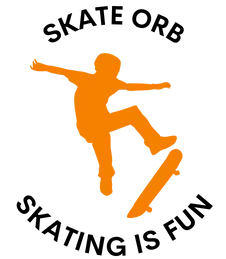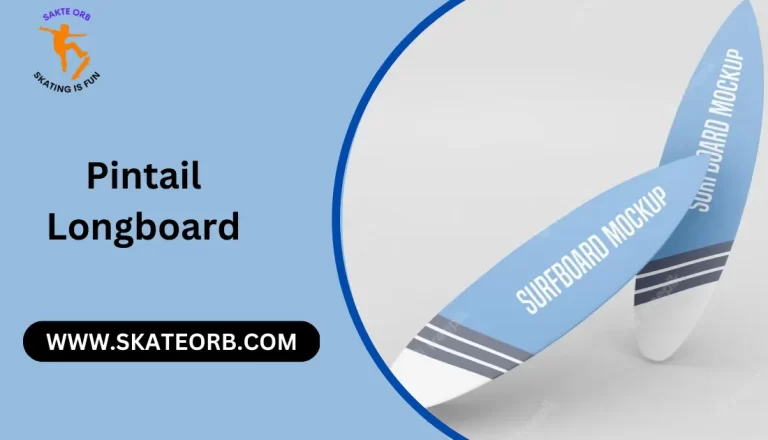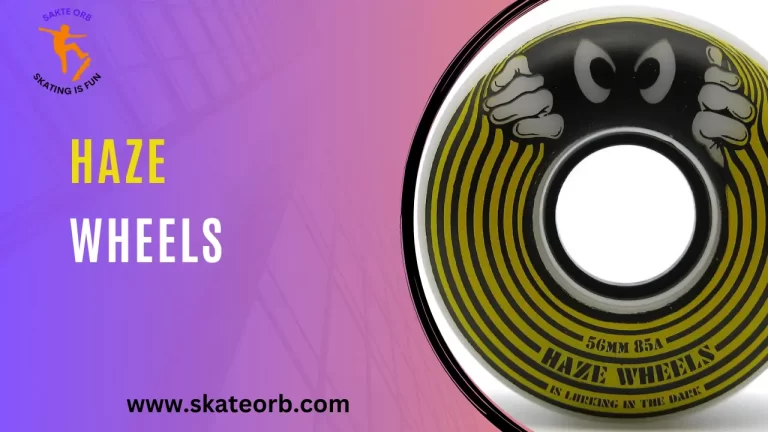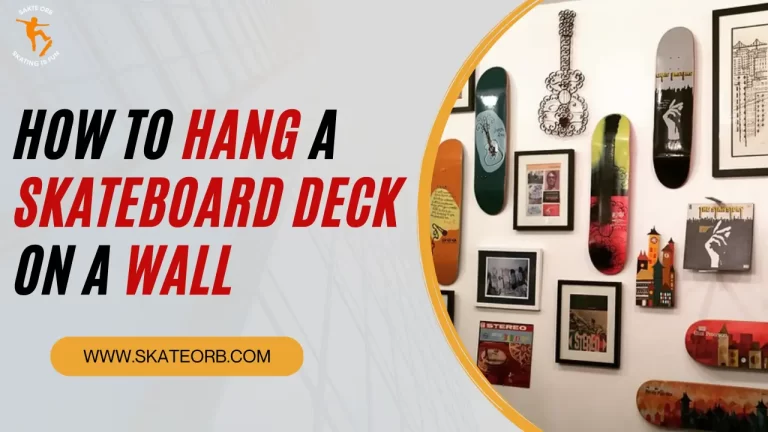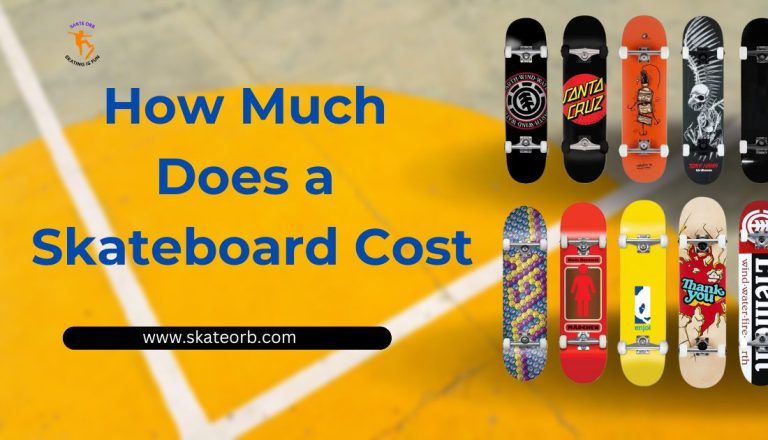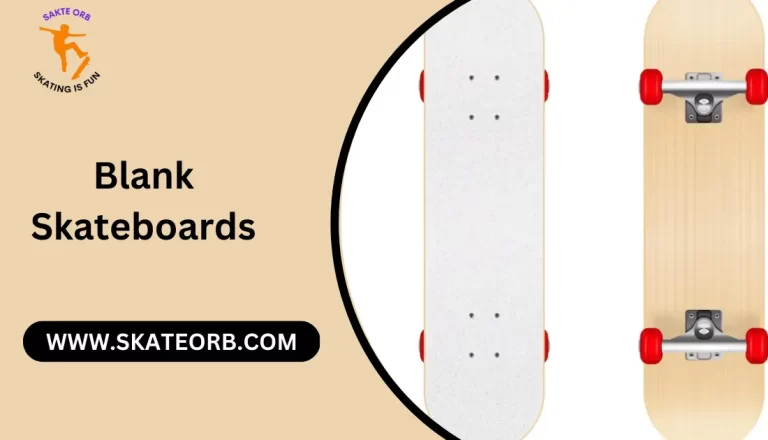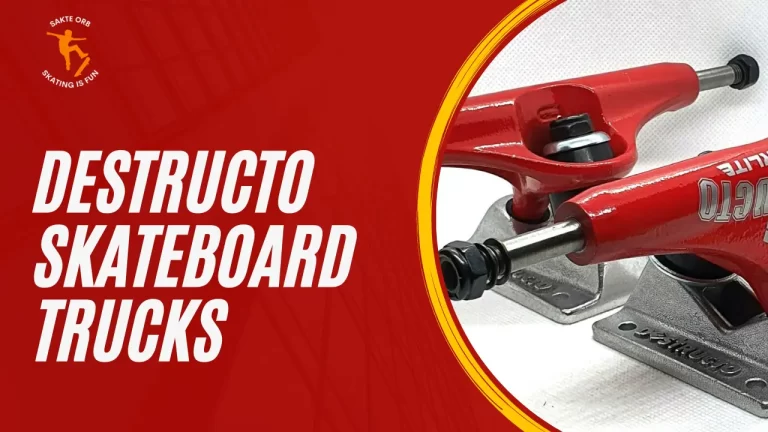What are Skateboard Decks (Buying Guide)

What are skateboard decks? Throughout the history of skateboarding, decks have gone through several stages of development and change. Today there are bridges with specific widths, lengths, shapes and special construction techniques for a specific terrain.
Most decks are made from North American maple, which is particularly strong and durable due to its slow growth. Traditionally, seven layers of maple wood are glued together with water-based glue or a special epoxy resin and pressed under high pressure to make a skateboard deck. In this article we will provide you information about what are skateboard decks.
Skateboard Decks: Construction and Sizes
Skateboards are usually 28-33 inches (70-80 cm) long.
The board is divided into three sections: nose (front), wheelbase (between the trucks) and tail (rear). Take a close look at the deck and see which side is the front and which side is the back. The nose is usually slightly wider and straighter than the tail.

Tip
The bridge design helps separate the nose from
the back. Most of the images are projected with the nose up, respectively to the left. The nose and tail are rounded ends of the rather steeply curved deck. Depending on the type of board, there are also flat and vertical models.
The theory is that steeper nose and tail tips add more pop to the deck due to increased leverage. On the other hand, the flat nose and tail make the board feel good. Pop = An effect that lifts the board into the air by hitting the tail of the ground board.
The wheelbase is usually 12-15 inches long and affects performance as well as the overall length of the board. Simply put, shorter decks feel more flexible and longer decks feel smoother and more stable.
Skateboard Deck: Concave
Concave refers to the longitudinal curvature of the deck. The greater curvature allows more pressure to be applied to the edges of the deck, which improves control and makes it easier to flip the board. Skateboard bags are generally classified as low, medium or high concave. Through trial and error, you can determine which level is most comfortable for you.
For beginners, we recommend starting with a medium-sized, concave skateboard deck.
Unfortunately, manufacturers rarely release information about deck holes. Therefore, the average concavity of brand “x” may be very different from the average concavity of other brands. Due to differences and variations in the manufacturing process, it cannot be assumed that no two comparable decks will have 100% identical concave surfaces. Skateboard bags are concave
- low concave
- middle concave
- High concavity
Lower Concave
Concave skateboard decks have a slight curve. This provides a more stable ride, but hinders agility. A low concave deck is also harder to twist.

Middle Concave
Medium concave decks offer a compromise between low and high concave decks. If you don’t know what level of concavity is right for you, you can’t go wrong with medium concavity. Most skittton decks are medium.
High Concave
The deck of the high concept has a very clear curve and is easy to start and from the curvature. However, decks with high concavity are not as forgiving to mistakes as decks with medium or low concavity.
What materials are skateboard decks made of?
Most skateboards are made of maple wood, but some are made of other materials. For example, many longboards are made of bamboo. If your penny board is plastic.
Other materials that can be used to make skateboards include:
- plastic
- compiler
- perspex
- optical fiber
- carbon fiber
- aluminum
- Other trees (bamboo, poplar, etc.)
With this in mind, maple, bamboo and plastic are still the most commonly used materials. Many newer boards have a layer of carbon fiber or carbon fiber reinforcement around the risers to prevent stress cracking.
Skateboard Deck: Recommended size
Here is a skateboard shape guide. Width is usually the deciding factor when choosing a skateboard deck. Determining the ideal width of a deck is difficult, especially for beginners. If you’re not sure what width is right for you, your shoe size and height are good indicators.
Try different sizes and understand your board so you can find the one that works best for you. So, we have gathered a series of recommendations to make your choice easier. The effect of skateboard deck width on ride performance
One of the main factors is that a wider plate provides a smoother ride at higher speeds. However, it requires more leg strength as it is a bit more difficult to rotate due to the heavier weight. On the other hand, a large surface can be an advantage during landing tricks, as it provides enough space to catch the board.

If you like holes, transitions, or top speed, you may want a wider board. Unlike wide boards, narrow boards are lighter and easier to twist. This can be especially beneficial for beginners as it takes less effort to learn the first trick.
However, the narrow deck can be difficult to maneuver at high speeds and there is little room to grab and land. That’s why narrow decks are perfect for technical skateboarding like combos on curbs or flat terrain.
Features of skateboard decks
What are skateboard decks features? Skateboard decks vary in size but most are between 7″-10″ wide, and are made of seven-ply wood, bamboo, resin, carbon fiber, or plastic. Deciding which skateboard deck is best for you depends on what you will be skating and, of course, your personal brand preference. Below are some factors to consider when buying your skateboard deck.
Width
Choose your skateboard deck according to the width, not length. The average width of a skateboard deck is 7.5″- 8.25″. The right width depends on your size and skateboarding style. If you buy a deck that is too wide for your height and shoe size, you will need to exert more power, which can make skateboarding and trick riding difficult.
If you choose a board that is too narrow for your height and shoe size, you’ll have trouble balancing and won’t feel stable. Generally, teen and adult riders will want at least a 7.5″ width. Larger skateboarders and those skating ramps and vert ramps should go with a wider deck, and street skaters usually need a smaller deck.
Length
Skateboard length is the distance from the tip of the nose to the tip of the tail. Shortboard length falls between 28″- 32″ but only advanced skaters refer to length. Width and wheelbase should be top considerations when building your skateboard, rather than length.
Wheelbase
The wheelbase is the distance between your board’s inner mounting holes. The distance between these mounting holes determines how far apart your front and back wheels will be. Manufacturers determine wheelbase by where they drill the truck mounting holes on the deck. The average wheelbase is 13″-15″. Although many decks only feature one set of holes, some skateboards have multiple mounting holes for trucks (or “wheelbase options”).
Adjusting the wheelbase can dramatically affect how the board performs. Your experience level will indicate the right wheelbase for you.
Nose and Tail
The nose is the “front” of your skateboard and the tail is the “back.” Which end is which can be hard to differentiate, but most decks provide you with graphics to tell the two apart. Many skateboard decks have a bigger kick on the nose and a mellower kick on the tail.
Mounting Holes
Mounting holes are pre-drilled holes where the skateboard trucks are attached. Arranged as two sets of four holes; one set is near the nose, the other near the tail.
Ply
Ply is the thin levels of wood that are tightly pressed together to make the skateboard deck. Rather than making a deck from one solid piece of wood, most manufacturers layer the wood in a cross-grain pattern to create a supremely strong board. The typical skateboard is seven-ply, and most boards aren’t over nine-ply.
Concave
Concave is the curve of the wood between the deck’s nose and tail. Concave allows a more controlled ride and a stronger skateboard. Read our concave guide below for more information about different concave shapes.
EFP
EFP is short for Effective Foot Platform. Unlike wheelbase, which measures only distance, EFP describes the area on the topside of the deck that riders stand on to control the board. EFP indicates the part of the deck between the front and rear trucks. You can think of EFP as the space of a skateboard deck that isn’t the nose or tail.
Rails
Rails are the edges along the length of your board, and their shape can make a difference in how your board rides. Rounded rails are common for skateboards, and their shape makes them good for flip tricks.
Sharp rails have a blunt edge, which keep your shoes securely in place during slides. Gas pedal rails (or GPs) are a specialized rail shape where areas of the rails have been cut to a beveled edge. GPs subtract the rail’s sharpness, and decrease the concave. Gas pedals give you better control and comfort when doing slides. What your rails can do also depends on the concave of the board.
Conclusion
As you can see, there are many elements to building a skateboard deck. The material the deck is made of, the number of layers, how it’s pressed and how long it takes for the adhesive to cure all affect how the board feels and performs. You can also check the skateboard size chart for decks to decide which deck is appropriate for you.There are also different skateboard deck shapes.
There are also many types of decks available in different skateboard shapes, skateboard deck sizes and materials. With so many options on the market today, it can be difficult to decide which one is right for you. Skateboard technology has been evolving for decades, and manufacturers are constantly experimenting with new technologies, materials, and graphic trends.
We hope this article helps to give enough information about what are skateboard decks.
FAQs
How to choose a skateboard shape?
There is no right or wrong deck of cards, it’s all a matter of personal preference, so it’s best to try different sizes and shapes. In general, wider boards tend to be more stable, while narrower boards tend to be more responsive and handle tricks more easily.
Should I get an 8.5 or 8.25 pack?
For shoe sizes above 9.5, we recommend a deck width of 8.0 to 8.5 inches. Skaters who like flips, manuals, edges, flat track and technical tricks usually choose narrower boards that fall in the 7.75 to 8.25 inch range.
How to choose your deck size?
The standard or average floor size for most homes is 300 to 400 square feet. Your deck should be large enough to support your guests and have room for anything you want to put on the deck, such as a grill or hot tub. The height of the fence is another factor and is determined by the height of your house.

Who Is Roy Harris
Hey there, I’m Roy Harris, and skateboarding is my life.
Growing up in sunny Southern California, I fell head over heels for skateboarding at an early age. From the moment I stepped on a skateboard, I knew it was my calling.
